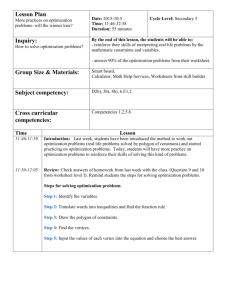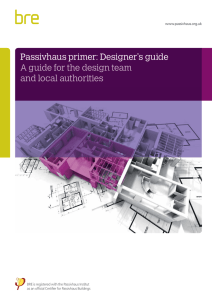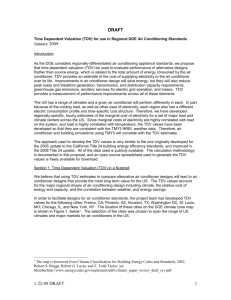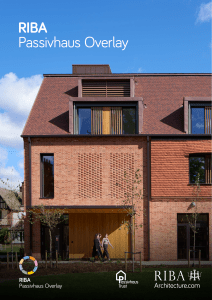Research Notes 10111..
advertisement
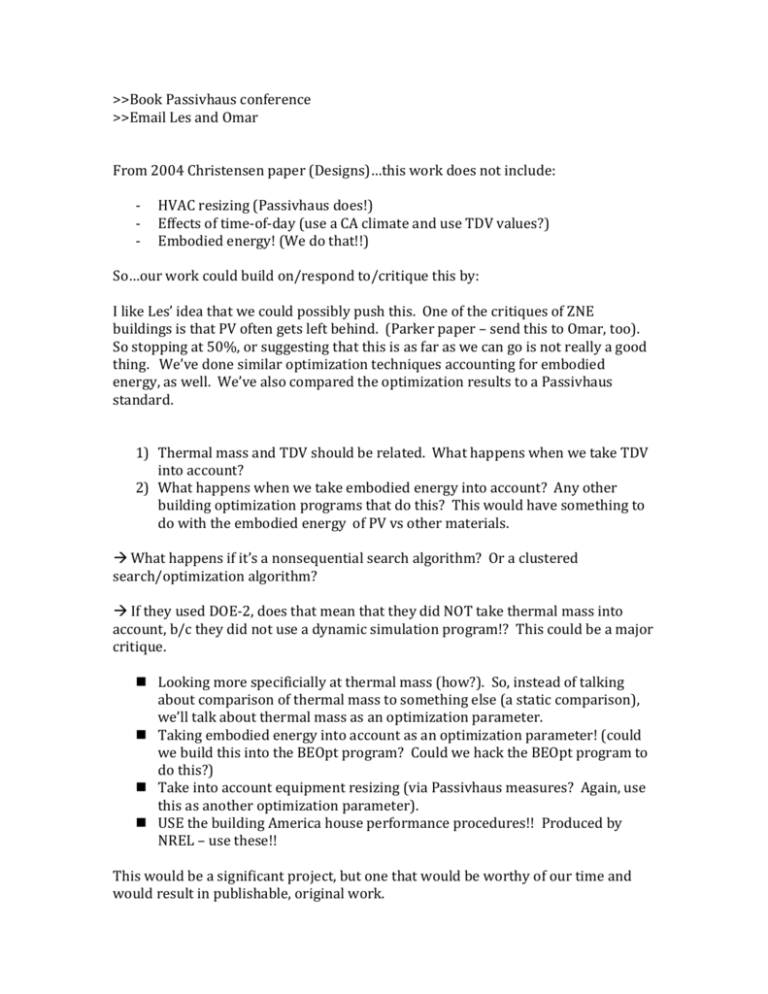
>>Book Passivhaus conference >>Email Les and Omar From 2004 Christensen paper (Designs)…this work does not include: - HVAC resizing (Passivhaus does!) Effects of time-of-day (use a CA climate and use TDV values?) Embodied energy! (We do that!!) So…our work could build on/respond to/critique this by: I like Les’ idea that we could possibly push this. One of the critiques of ZNE buildings is that PV often gets left behind. (Parker paper – send this to Omar, too). So stopping at 50%, or suggesting that this is as far as we can go is not really a good thing. We’ve done similar optimization techniques accounting for embodied energy, as well. We’ve also compared the optimization results to a Passivhaus standard. 1) Thermal mass and TDV should be related. What happens when we take TDV into account? 2) What happens when we take embodied energy into account? Any other building optimization programs that do this? This would have something to do with the embodied energy of PV vs other materials. What happens if it’s a nonsequential search algorithm? Or a clustered search/optimization algorithm? If they used DOE-2, does that mean that they did NOT take thermal mass into account, b/c they did not use a dynamic simulation program!? This could be a major critique. Looking more specificially at thermal mass (how?). So, instead of talking about comparison of thermal mass to something else (a static comparison), we’ll talk about thermal mass as an optimization parameter. Taking embodied energy into account as an optimization parameter! (could we build this into the BEOpt program? Could we hack the BEOpt program to do this?) Take into account equipment resizing (via Passivhaus measures? Again, use this as another optimization parameter). USE the building America house performance procedures!! Produced by NREL – use these!! This would be a significant project, but one that would be worthy of our time and would result in publishable, original work. Cite what’s been done before…. --- what has NOT been done is to put this in the context of using passive strategies…??? --- or…what else has not been done? --- applying it to very low energy systems! - scheatzle provides one of the only examples of empirical data? But this wasn’t in a test chamber, it was in a house…. I can provide empirical data perhaps I can pull together a comprehensive reinvestigation of all of this?! using it to measure passive stuff… zhang just calculated loads… rather than using PMV, use a non-invasive way to get feedback from occupants (infrared?) in Tso, they treat meant radiant temp as an uncontrolled variable -- What if we can also implement control algorithms as a part of the optimization??! Or…..post-process in E+ or other simulation using control algorithms to see how much further we can go?! Combine this with empirical data….. ------!!!!BEopt has climate-specific reference buildings available Rather than DOE2 TRNSYS, running BEopt with E+ is available Evaluates DISCRETE options Has a document: BA House Simulation Protocols Effective and nominal R-value taken into account. If I have an E+ file, can I open it in BEopt?? Doe2 vs. E+ -- simulating thermal mass Cases must be used for changing climate, economics, geometry, etc. So, building efficiency can be changed at the building level, but other things must be done at the case level. BEopt does not do multiple wall options at present – same wall type wherever there is conditioned area and exterior conditions; exception is interzonal wall. can do work around with a category called: other walls (?) BEopt has some sample files. USE BEOPT for the OUTPUTS!! >>> Part of why it would be good to use BEopt to determine an optimized building and then understand the role of controls in that building would be to ensure that the results are highly replicable. >>Building America program adjusts/normalizes energy savings for large buildings (b/c it’s easier to achieve energy savings in a larger building) >> Retrofit analysis needs to use more manual input assumptions >> BuildingAmerica ‘Technology pathways analysis” >>Size of HVAC does not change – is this just for retrofit? Optimization mode >> You have to select what you want it to optimize between (?) >>It doesn’t simulate all of the possible options – it uses a search technique… >> Can select a point from optimization and create a new case off of that and do a sensitivity…. !!! >> Have to ask for hourly output – need to select a simulation and then it will re-run the ones you want. >> Characteristics of BA B10 building are basically IECC 2009 >> So….BA10 is a methodology? >>The optimization plot shows “minimum cash flow designs at various energy saving levels”. >> Only shows “energy-related cash flow”. No morgatge-related component, because we have not increased our morgatge to pay for the efficiency improvements.. >>Point 2 on the graph is the lowest cost point…but…it’s not linear because you need some investment (cost) to get to the lowest overall cost. >> Search methodology always looks for the steepest curve (downward) option and selects that for use – NOT necessarily the greatest energy savings. >> The nice thing about dealing with small houses/simple systems is that the control algorithm isn’t about making different parts of the system talk to each other more efficiently – it can focus more on the comfort equation and exploring that. --------Comparison of different standards: Use a B10 benchmark?! Building America B10 benchmark BEopt will create a b10 benchmark model for you very quickly. Building America Benchmark has rules about what you can/can’t deviate from, and this is indicated in the simulation. - Rules about if you have x in the design building, you have to have y benchmark system in the building.





